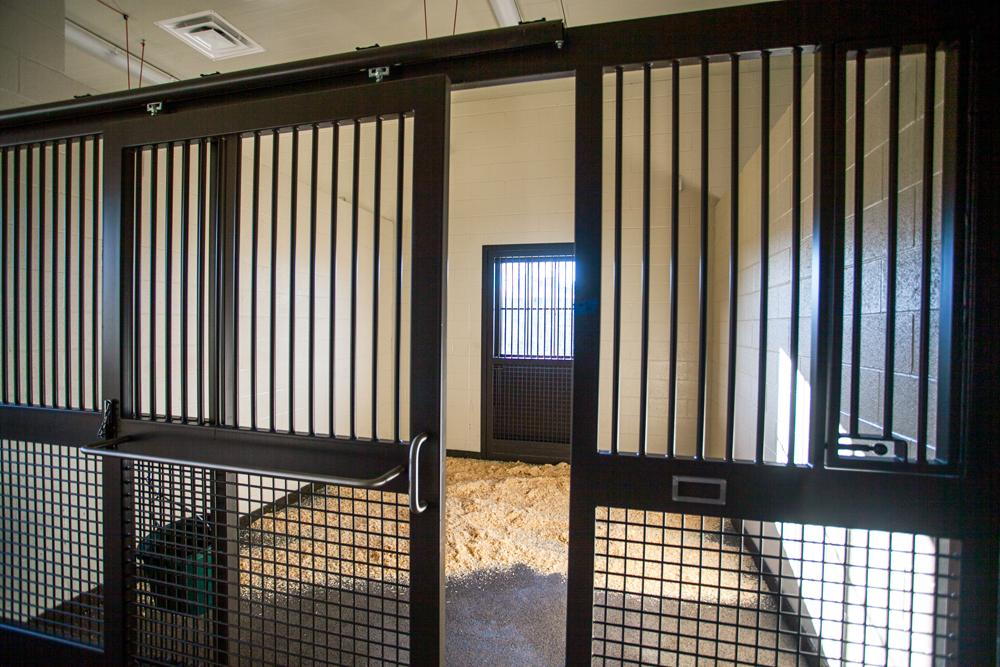Fall Barn Safety Checklist
- posted: Oct. 18, 2022
The time it makes most sense to tidy up and get everything in order is between seasons. You are already getting rid of stuff you don’t need and you are in the mindset to get stuff done! Accident proofing your barn is one task that should be done every season! Keep reading to get some ideas about what to check on and fix in your own barn!

Daily Patrol
Every day while you are completing barn chores and feeding what seems to be an endless supply of mouths, take notice of the condition of the barn. Has that gray gelding been chewing a hole through the top of his wooden door? Has one of the bucket snaps gone MIA? Has the pony scratched his hind end on the door just aggressively enough that the lock no longer lines up with the latch? Are there rough spots where there is hair left behind? Has anyone been trying to come in for afternoon feedings while wearing flip flops or open toed shoes (TIP: if you want to keep all of your toes, wear closed toe shoes at all times around horses) All of these issues need to be dealt with before the new season arrives.
Clear the Aisle
Keeping the pathway clear and clutter free helps keep everyone safe, especially in the case of an emergency. There is no shame like tripping over the wheelbarrow when you walk out of the feed room while texting or listening to music (leave the headphones at home when you are around horses). Tack trunks with sharp edges left unattended in the aisle can cause cuts on legs and halters attached to lead ropes loosely tied or hanging on the floor can cause big issues when a horse sticks his leg through in a panic situation. A clean barn aisle is a safe barn aisle.
Heavy Duty Hardware
It turns out you have known for a while about the lock on the pony’s door and have been putting it off until now. While it may be easier to deal with it later, getting new locks (if yours are damaged or rusty) can help keep everyone in their stalls (even that escape artist pony) and extend the life of your barn. Also make sure to check the hardware on the barn doors that open up the barn and allow people to enter. Those are opened more frequently than stall doors and are more exposed to the elements.
Horse-Proof Stalls
Has that nail that was sticking out just a little bit a few months ago become a full on stall weapon? Do you make a mental note to avoid it when walking close to that side of the stall in fear that you will get stabbed and develop tetanus? Make sure to tidy up the stall of any possibly dangerous materials that even though small, could cause damage to your horse. Periodically take a hammer around with you to hammer in any nails that are sticking out and use screws in their place when possible! Check high up and down low (especially for those who have ponies and miniature horses)! Are there slack cords from the the box fan out and in view of the horse that gets bored easily and has a habit of chewing on anything and everything? Make sure to hide them or tuck them away out of reach from him. Cutting PVC pipe in half the length of the cord can help to get it out of reach when secured firmly over the cord.
Inspect the Lighting
Are all of the barn lights in working order? Is that one wonky bathroom light still blinking whenever you turn the sink on? Is that one end of the isle still avoided because the lights are out and there are no horses currently kept in the stalls but you’re too scared to see if anything else has taken up residency? Having a clear view of all parts of the barn is very important. Knowing where the horses are and where the people are can be the difference between life and death should an emergency or barn fire occur.
Fire Evacuation Plan
Most barns haven’t had to experience the terror that is a barn fire. Do most barns have a fire evacuation plan? No. While it is nice to believe that you have everything in place should there be an emergency, having an actual drawn up or typed out emergency plan can save lives. The barn manager may know what to do in case of a fire and where to take the horses but the new boarder that just moved her horse in would have no clue if there wasn’t a plan laid out and visible. Speak with your local fire department to create an escape plan and then laminate it and put it in a very visual place. Laminating this will prevent it from getting weak over time from moisture and helps it repel stains easier. Better yet, print out a small copy of the plan and give it to each boarder to keep in their horse’s first aid kit with his coggins (in case he needs to be hauled somewhere) and the number to the veterinarian. Make sure there is at least one working fire extinguisher in each barn. This needs to be serviced appropriately to keep it in good working order.
Carolina Equine Hospital
Location
Find us on the map
Browns Summit Location
5373 NC Hwy 150
Browns Summit, NC 27214, United States

